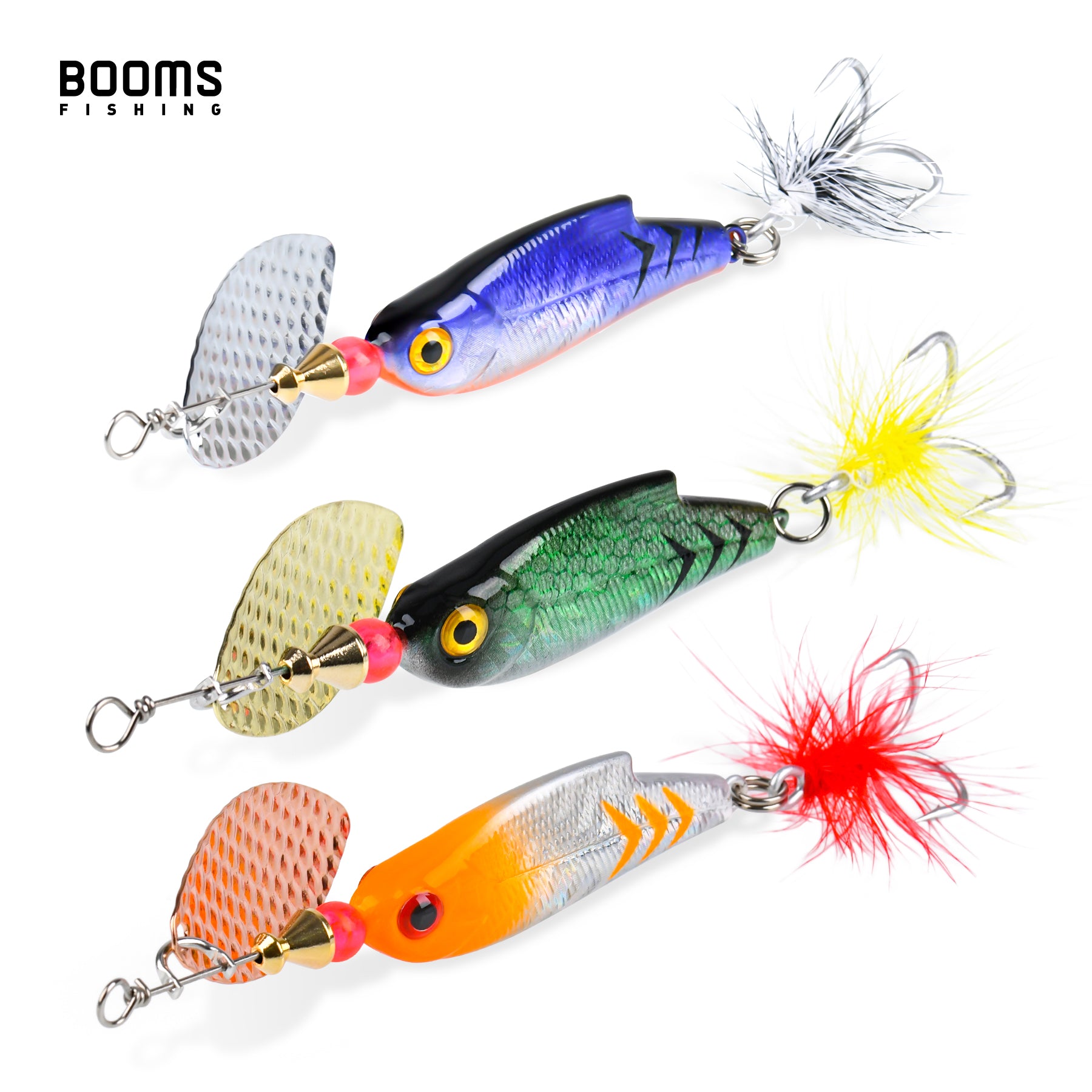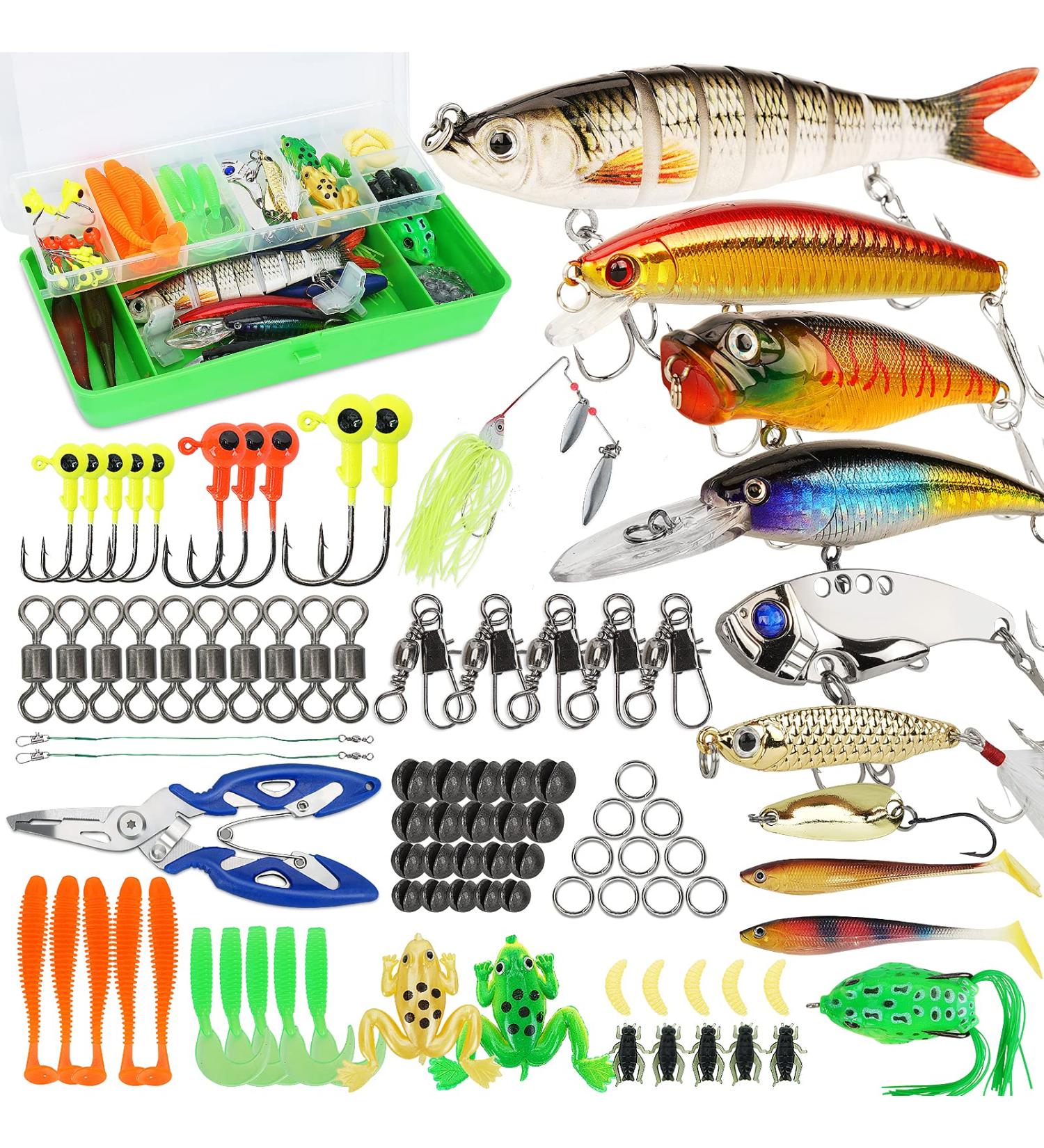Premium Bass Fishing Lures for Clear vs. Murky Water — What Works Best?
Explore the Keys Behind Efficient Bass Lures to Enhance Your Fishing Experience
Recognizing the intricacies of bass Lures can greatly influence angling success. Different Lures serve distinct objectives, from crankbaits made for broad coverage to jigs that target specific structures. The effectiveness of these Lures commonly depends upon factors such as color, motion, and seasonal patterns. By mastering these components, fishermens can unlock a more gratifying experience. Yet, the concern continues to be: which strategies will generate the very best results on the water?
Understanding Bass Actions and Habitat
Understanding the habits and habitat of bass is vital for anglers looking for success on the water. Bass are flexible fish found in numerous freshwater settings, including ponds, lakes, and rivers. They often tend to favor locations with structure, such as immersed rocks, fallen trees, and water vegetation, which offer shelter and hunting premises.
Seasonal patterns dramatically affect their behavior; in warmer months, bass commonly populate superficial waters, while they retreat to deeper locations throughout colder periods. Bass Lures. Their feeding routines are opportunistic, with a diet consisting mostly of smaller fish, bugs, and shellfishes
Time of day likewise contributes; bass are more energetic during late evenings and very early mornings. Weather can affect their habits too, as overcast days may motivate shallow feeding, whereas bright sunlight frequently drives them to seek cover. Acknowledging these patterns equips fishermens with the knowledge required for effective angling techniques.
Kinds Of Bass Lures and Their Utilizes
A selection of bass Lures are vital tools for anglers intending to attract this popular game fish. These Lures can be classified into several types, each serving distinctive functions. Crankbaits, designed to simulate the swimming activity of baitfish, work for covering large locations swiftly. Spinnerbaits, featuring rotating blades, develop vibrations and flashes that can tempt bass hiding in cover. Jigs, with their hefty heads and weedless style, are excellent for bottom angling, permitting fishermens to existing lure near frameworks where bass usually lurk. Soft plastics, such as worms and creature baits, offer versatility and can be rigged in numerous methods to adapt to varying conditions. Topwater lures, like poppers and frogs, are best employed during low-light hours when bass are proactively feeding upon the surface area. Each type of appeal plays an important function in boosting angling experiences and increasing the likelihood of successful catches.

Color and Design: What Draws In Bass?
What variables affect bass destination to certain attraction design and colors? The interplay of light, water clarity, and the all-natural atmosphere plays an important role. Brilliant colors, such as chartreuse and orange, can capture a bass's eye in dirty waters, while a lot more controlled tones like blues and eco-friendlies may master clear conditions.
Style elements, including shape and movement, likewise dramatically effect bass tourist attraction. Lures that simulate natural target, such as baitfish or crawfish, are particularly effective. In addition, the existence of realistic details, like ranges or fins, enhances the natural look, additional enticing bass.
Psychological factors, such as a bass's feeding habits and territorial reactions, have to not be ignored. In certain scenarios, vibrant styles can prompt a reaction from hostile bass, while subtle variations can attract more mindful fish. Eventually, recognizing design and color subtleties is crucial for enhancing lure performance.
Matching Lures to Water Issues
Picking the ideal attraction includes greater than simply color and design; water problems play a significant role in figuring out one of the most efficient options. Aspects such as water temperature, deepness, and clarity directly influence bass behavior and their feeding patterns. In clear water, subtle discussions and all-natural shades tend to be a lot more efficient, while dirty conditions may call for brighter, more vivid Lures that can stand out.
Temperature level also affects bass activity; during warmer months, faster-moving Lures can evoke strikes, whereas cooler temperatures may require slower, extra purposeful discussions. Furthermore, deeper waters often necessitate larger Lures that can reach the wanted deepness, while shallow locations are better matched for lighter, surface-oriented alternatives.
Strategies for Reliable Draw Discussion
Mastering the techniques for effective appeal presentation can dramatically enhance angling success. Anglers need to concentrate on the rate and rhythm of their retrieves, adapting them to simulate the all-natural activity of victim. A stable obtain jobs well for lots of attractions, however incorporating pauses can activate strikes from much more careful fish. Additionally, differing the deepness of the lure is essential; using different spreading angles and adjusting the reel can aid target fish at various midsts.
Making use of a combination of skill discussions, such as twitching or dragging the appeal throughout the bottom, can additionally be reliable. It is necessary for fishermens to read the water and readjust their strategies based on exposure and structure. Presenting Lures near cover, like immersed rocks or plants, usually generates better outcomes, as bass have a tendency to look for shelter. Inevitably, trying out various techniques will certainly cause a check that more gratifying angling experience.
Seasonal Considerations for Lure Option
Seasonal adjustments considerably influence bass behavior and appeal performance. As water temperature levels change, anglers must adjust their appeal selections to line up with pre-spawning and post-spawn conditions. Comprehending these seasonal patterns can boost angling success by targeting bass at their most energetic times.
Seasonal Water Temperature Level Results
As water temperatures rise and fall throughout the year, bass habits and feeding patterns alter, affecting the efficiency of different attractions. Throughout cooler months, bass often tend to become inactive, favoring slow-moving Lures that simulate struggling victim. In comparison, as temperature levels climb in spring, bass come to be extra active, making quicker, extra hostile Lures effective. Mid-summer sees bass seeking deeper, cooler waters, demanding making use of Lures that can get to these midsts. As temperature levels begin to decrease in fall, bass usually feed heavily in prep work for winter, making functional Lures that can mimic a variety of forage types specifically successful. Understanding these seasonal temperature level results enables anglers to choose ideal Lures that line up with bass actions, optimizing their angling success.
Pre-Spawning Lure Choices
What elements affect the choice of Lures during the pre-spawning period for bass? Anglers must think about water temperature, climate condition, and the bass's feeding behavior. As temperature levels rise and days lengthen, bass end up being a lot more active and hostile, motivating a shift in their feeding patterns. Throughout this time, lures that mimic the natural target of bass-- such as shad or bluegill-- are especially effective. Popular options include spinnerbaits, lipless crankbaits, and jigs, which can be fished at various depths. In addition, fishermens must focus on areas with cover, such as immersed plants or rough frameworks, as these places frequently attract pre-spawn bass. Bass Fishing Lures. Comprehending these variables can significantly improve the possibilities of an effective fishing expedition throughout this vital seasonal phase
Post-Spawn Techniques Adjustments
Post-spawn bass display various habits than throughout the pre-spawn stage, reliable attraction option continues to be vital for fishermens aiming to target them successfully. After generating, bass usually end up being sluggish and look for much deeper waters, making it vital to readjust lure options appropriately. Fishermens ought to think about using slower-moving baits, such as jigs or soft plastics, which can lure bass that are much less hostile. Crankbaits with a subtle activity can also work, enabling a slower presentation that you can try here imitates the natural post-spawn forage. Additionally, fishing near structure, such as immersed plants or rocks, can raise opportunities of success. By understanding these seasonal modifications, fishermens can boost their angling experience and improve their catch page rates during the post-spawn duration.
Frequently Asked Inquiries
Exactly how Do I Choose the Right Pole for Bass Angling?
To select the right rod for bass angling, one must consider the pole's length, power, and activity. A tool to medium-heavy pole, around 6 to 7 feet, is typically excellent for flexibility and control.

What Is the most effective Time of Day to Capture Bass?
The most effective time of day to catch bass is commonly very early morning and late mid-day. During these periods, bass are much more active, feeding near the surface, making them easier targets for fishermens utilizing reliable attractions.
How Do Climate Conditions Impact Bass Angling Success?
Climate condition considerably affect bass angling success. Warmer temperatures and overcast skies frequently encourage bass task, while cold snaps can create sleepiness. Rain can likewise boost feeding behavior, making it important for fishermens to adapt their methods as necessary.
Can I Make Use Of Lures for Other Fish Types?
Yes, entices created for bass can additionally work for various other fish types. However, choosing the proper size, shade, and action according to the target species and their feeding routines stays important for success.
What Prevail Errors When Using Bass Lures?
Typical errors when using bass Lures consist of picking improper dimensions or colors, recovering also rapidly, failing to adapt to weather problems, and not taking into consideration water deepness. These mistakes can considerably decrease the chances of a successful catch.
As water temperature levels rise and fall throughout the year, bass actions and feeding patterns transform, influencing the effectiveness of various appeals. Mid-summer sees bass seeking deeper, cooler waters, requiring the usage of Lures that can get to these depths. Post-spawn bass exhibit various habits than throughout the pre-spawn stage, efficient appeal selection continues to be vital for anglers aiming to target them successfully. After generating, bass commonly end up being inactive and seek deeper waters, making it necessary to change appeal options as necessary. Usual errors when using bass Lures consist of picking inappropriate dimensions or colors, retrieving too rapidly, stopping working to adjust to weather problems, and not considering water deepness.